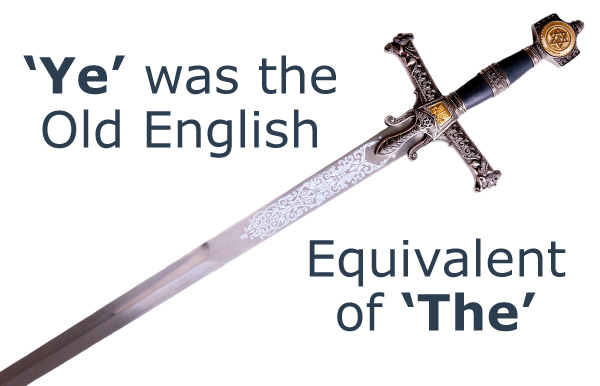Was “ye” the Old-English equivalent of “the”?
We’ve all seen signs for “Ye Olde Ice Cream Parlor” or “Ye Olde Tavern.” Meant to evoke the feel of an earlier era, particularly medieval times/middle ages, the term in its current form probably only dates back a couple hundred years.
The Old English alphabet consisted of 20 familiar letters (no j, v, w, k, q or z) plus four additional letters that eventually fell out of common use. One of those additional characters, called a “thorn,” was pronounced as “th.” In the 15th century, German typesetters creating letters for the first printing presses had no symbol in their language for “thorn” so it was replaced with the letter “Y,” which it vaguely resembled (at least in its handwritten form). Therefore, the printed word “ye” was always pronounced “the.”
In the late 18th century, businesses began tacking “ye olde” onto their names to make them sound old-timey and quaint. By this time, the origins of “ye” (and its proper pronunciation) had been long forgotten.
Bonus Fact: There were many archaic variations of the word “old,” including “auld” and ole” but the word “olde” was used very rarely and apparently only as a noun referring to the elderly.




